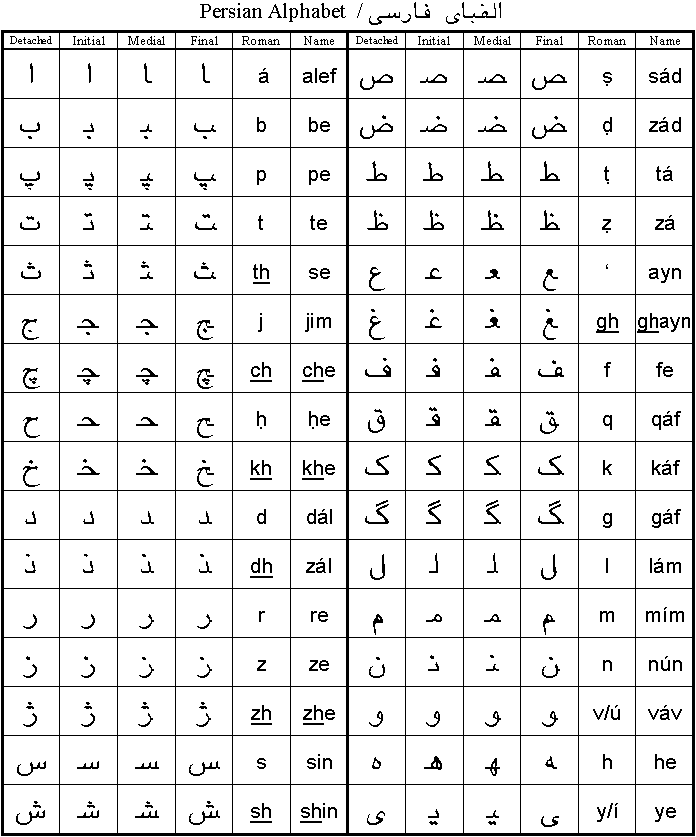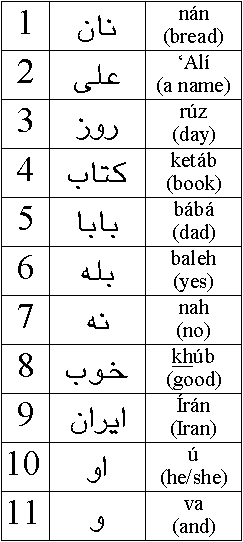The Persian language (or called Farsi by speakers) has a rich history going back many thousands of years and containing many volumes of stories, history, poetry, and scientific works. The first form of writing used was Cuneform. Through the years, the language has employed different scripts. After the introduction of Islam, Persian used the Arabic script with a few extra letters. Because of the cursive nature of the script, calligraphy often appears. Here are some notes for the letters:
- It is written from right to left.
- Letters each can have up to four forms:
- Detached - the letter as it appears by itself, no letters joining to it either before or after.
- Initial - the letter as it appears when not preceeded by a joining letter.
- Medial - the letter as it appears when there are joining letters both before and after the letter.
- Terminal - the letter as it appears when it is preceeded, but not followed by joining letters.
- These letters never join to letters after them - alef, d?, z?, re, ze, zhe, and v?.
- When two letter are underlined together (in the Roman script), they represent one sound.
- The letters ze, z?, zad, and za are all pronounced like "z", but "ze" is used the most frequently.
- The letters se, sin, and sad are all pronounced like "s" in Persian, but "sin" is used the most frequently.
- The letters te, and ta are both pronounced like "t", but "te" is used the most frequently.
- "V?" and "ye" can be used both as consonants and as vowels.
- Written vowels are indicated in Roman transcription by an accent over the vowel.
- Words that begin with a vowel sound are always written begining with either an "alef" or an "ayn".
- Pronounciation:
- ?- like in "father"
- a - like in "cat"
- ?- like in "food"
- u - like in "home" (this is properly an "u" but sometimes appears as "o")
- ?- like in "feet"
- i - like in "get" (this is properly an "i" but sometimes appears as "e")

Here are some examples of transcription:
 |
Notes on words:
- Notice the different forms that the letter n? takes at the begining and end of the word.
- Notice the apostrophe is transcribed as an ayn and since the "A" is not accented, no other vowel is written. Also notice the difference between l? and alef(1) when appearing in the medial positions.
- Notice these three letters do not connect to eachother.
- Notice again how accented vowels are written. This word could also be written kit?.
- Notice and learn the difference between be and n?(1).
- An unaccented "a" is prounounced like in "cat".
- Notice the form he takes at the end of a word.
- Notice the use of v? as a vowel.
- Notice begining the word with an alef. Without an alef, the word would be something like "yar?" or "yer?."
- So, the word "? in Persian meaning he or she, has to be written with an alef.
- V? written by itself would be "va".
|
This transcription scheme was, for the most part, taken from an appendix in "The Dawn-breakers," also known as "Nabil's Narrative," an account of the early history of the Bah??Faith, prior to Bah?u'll?'s ministry.
Write me!

